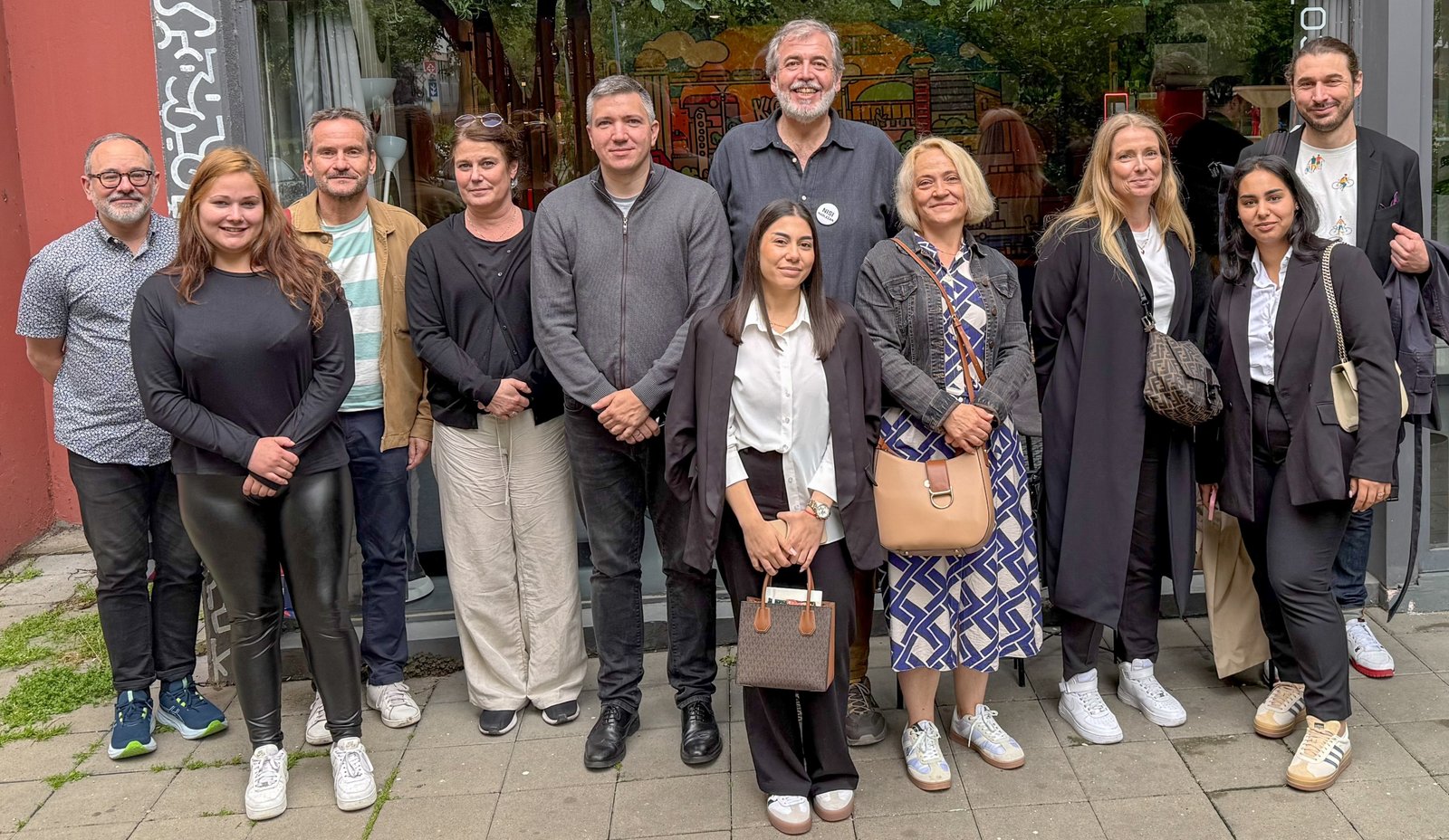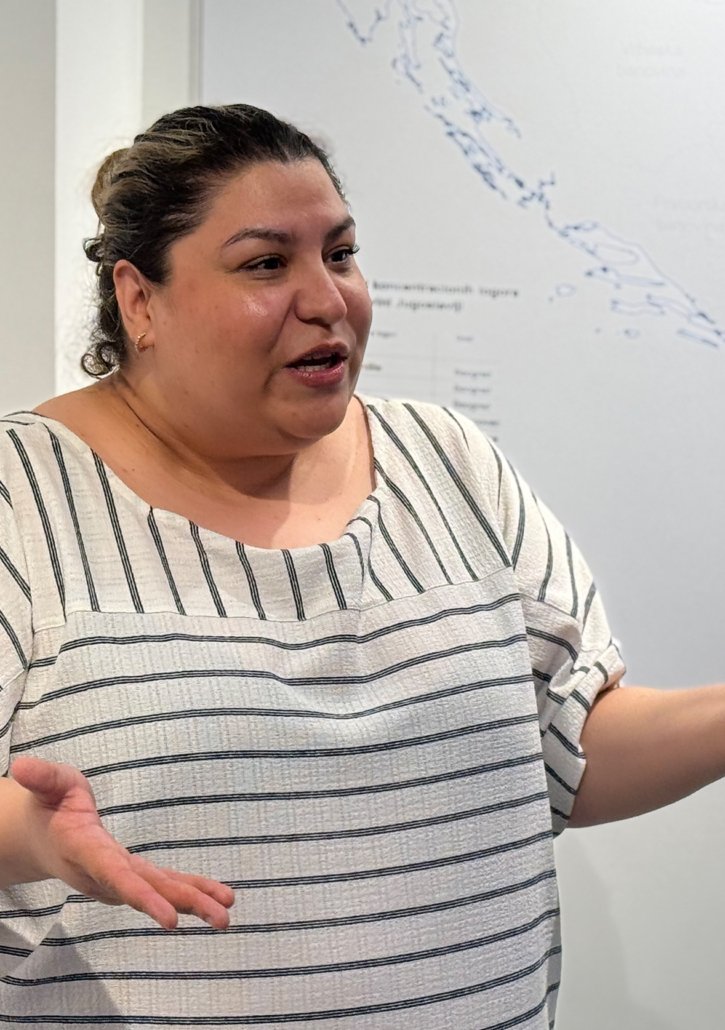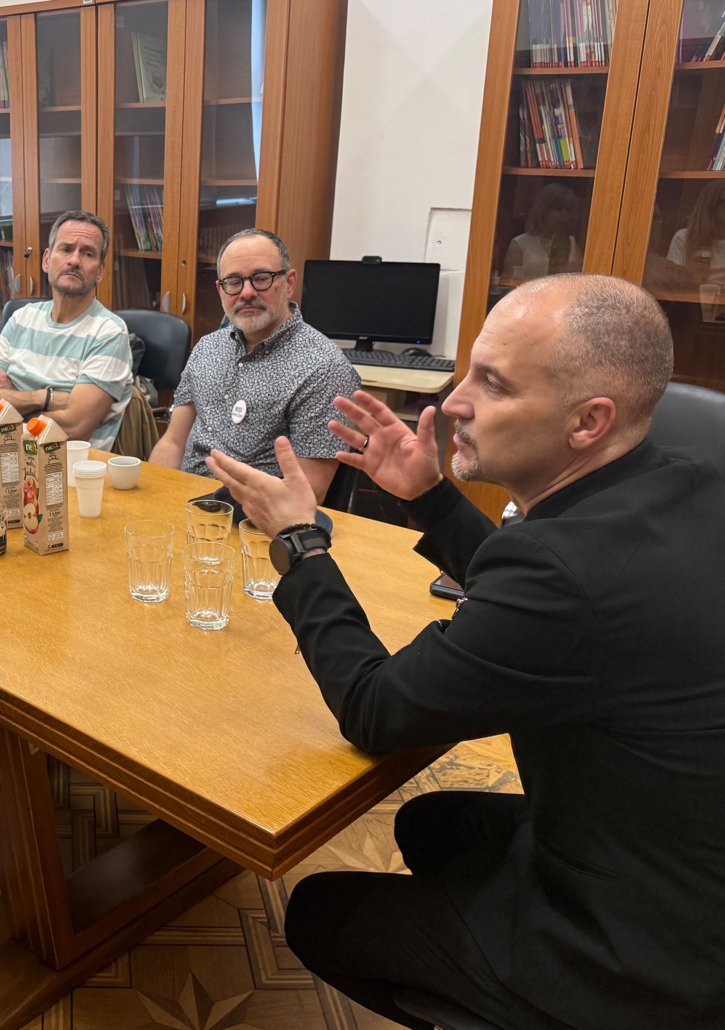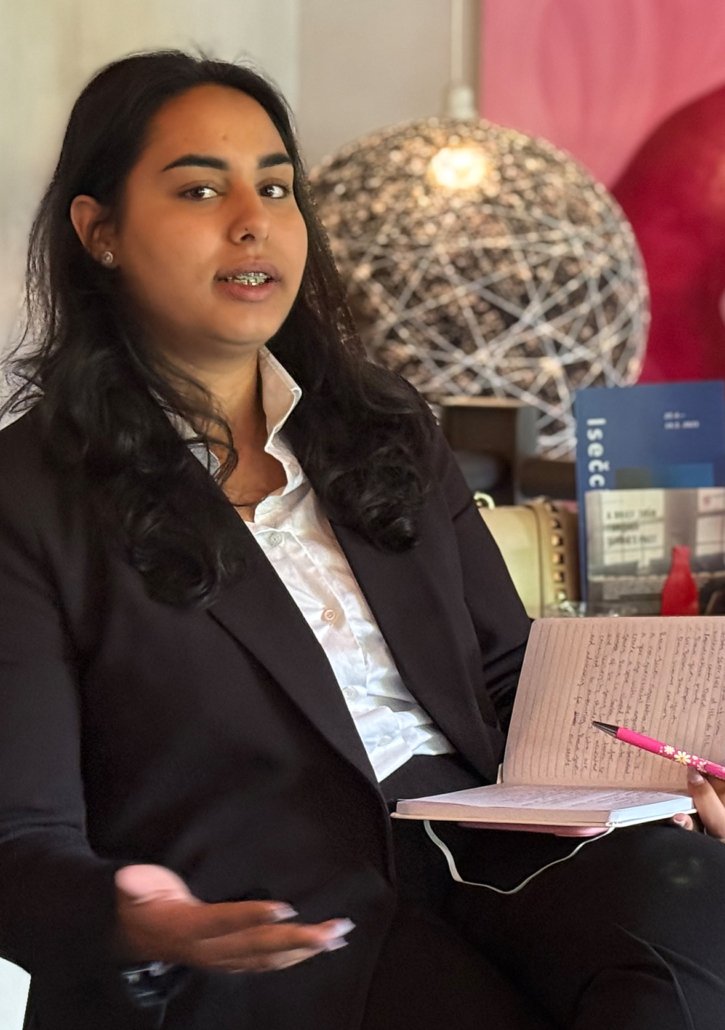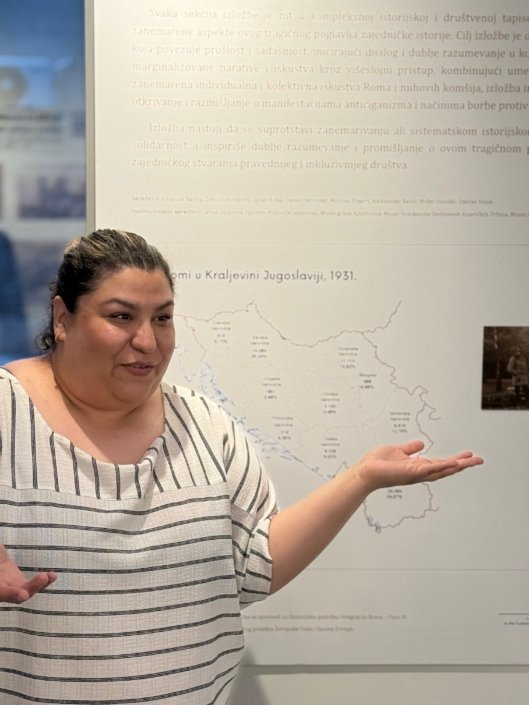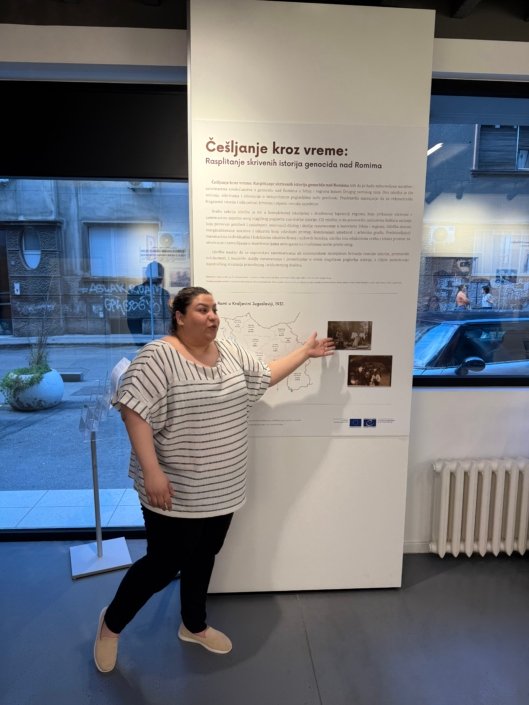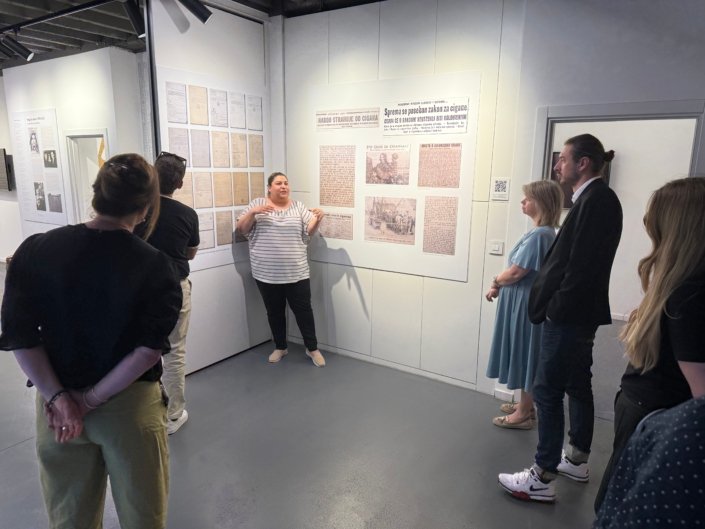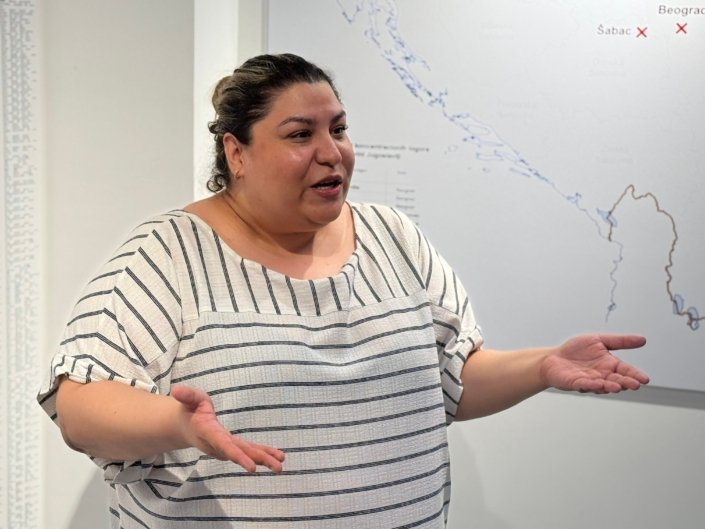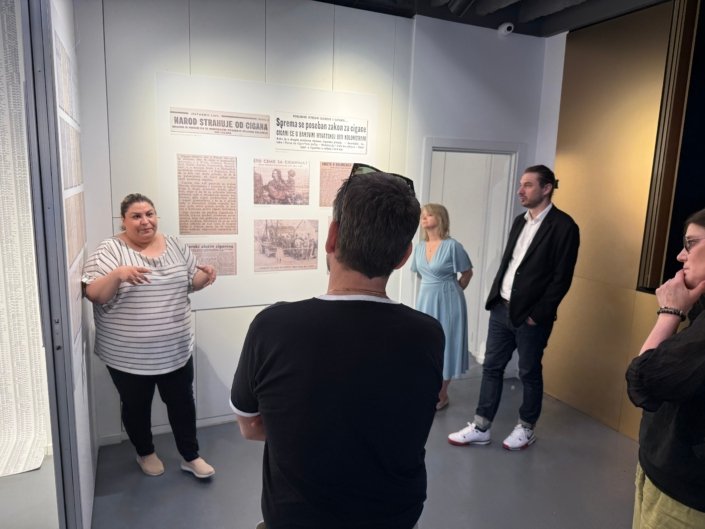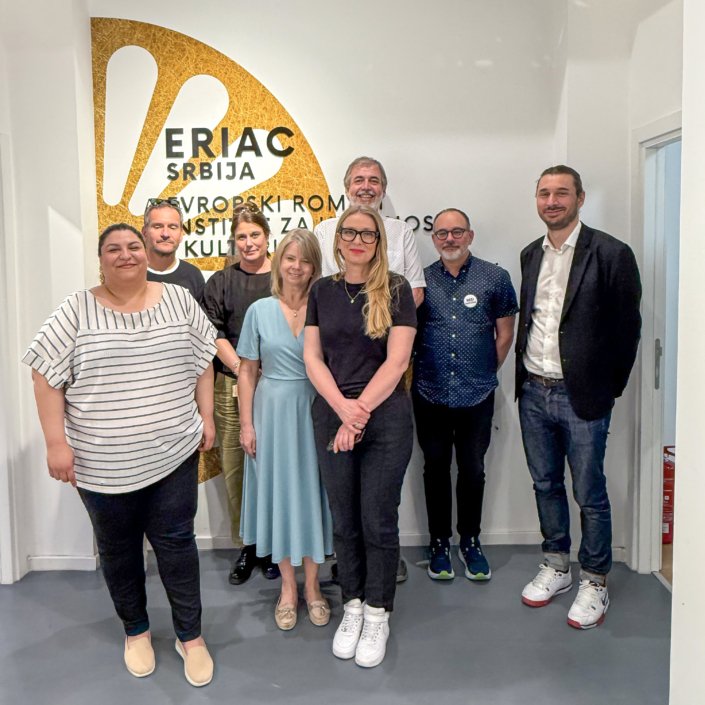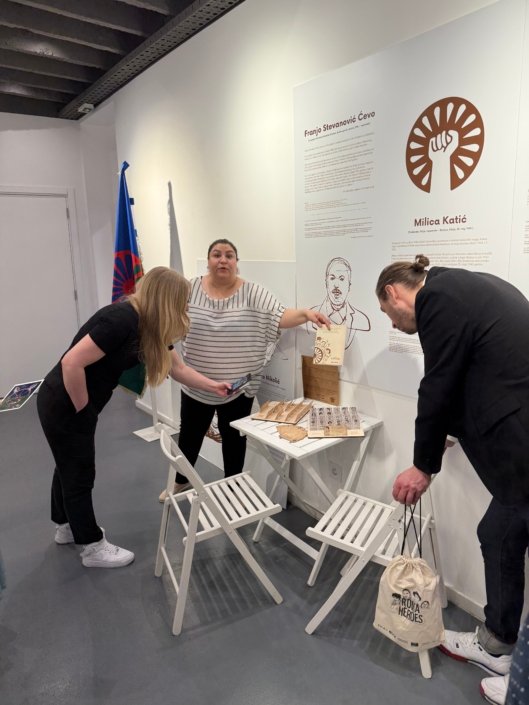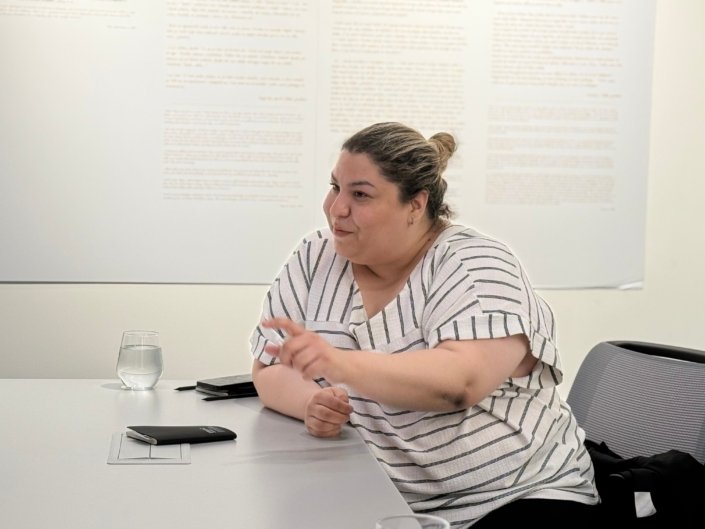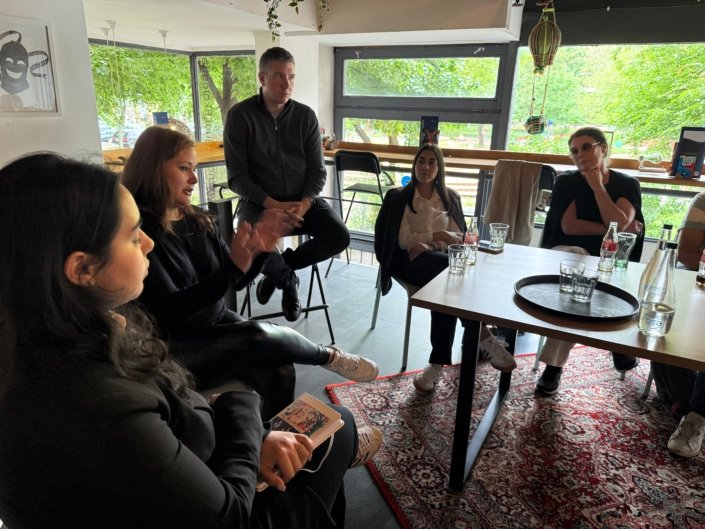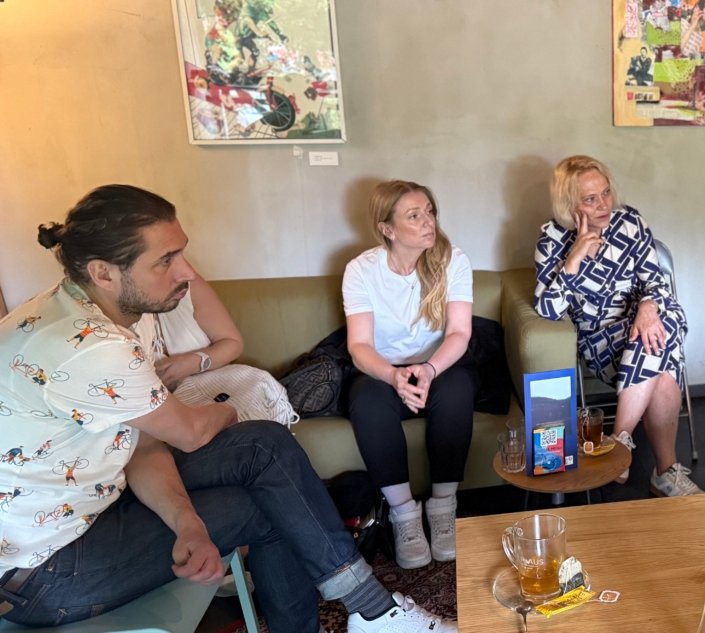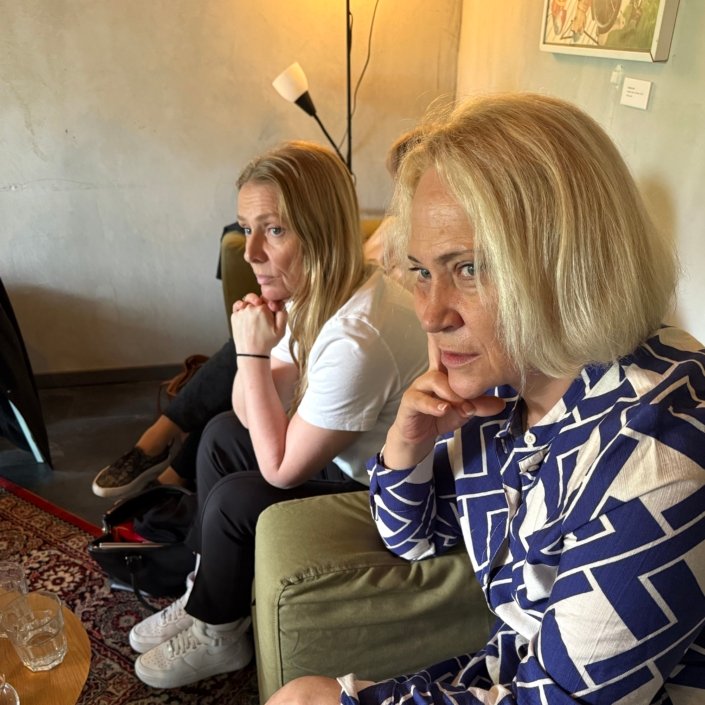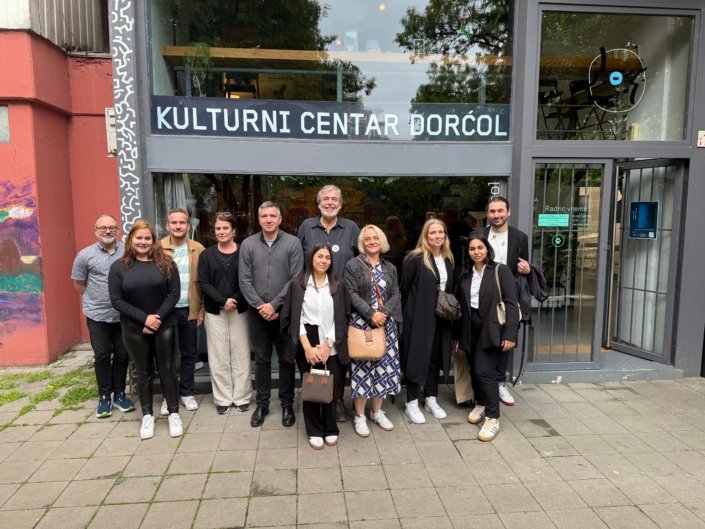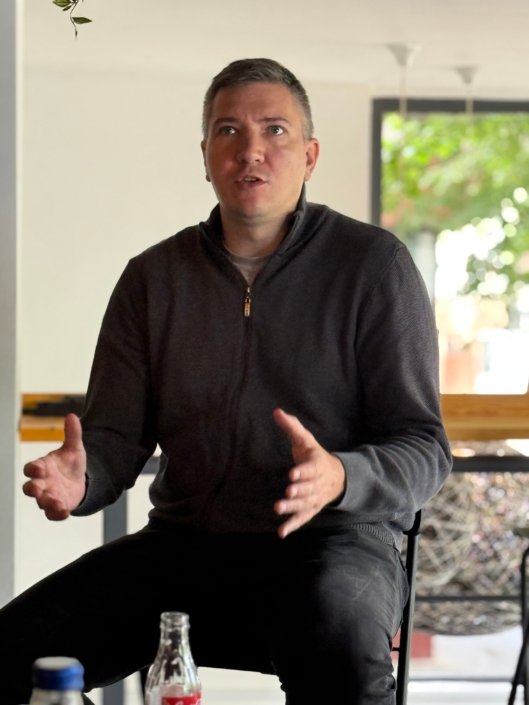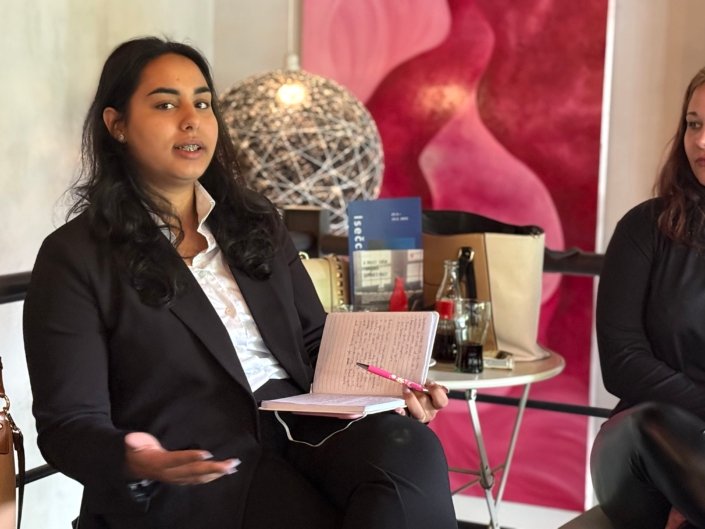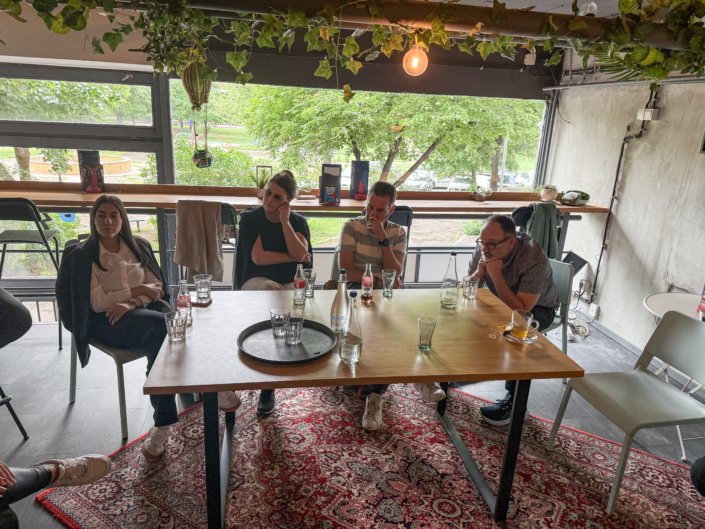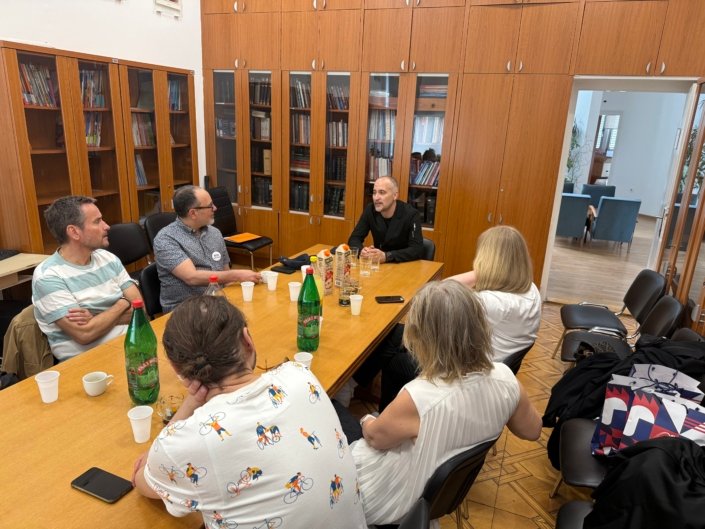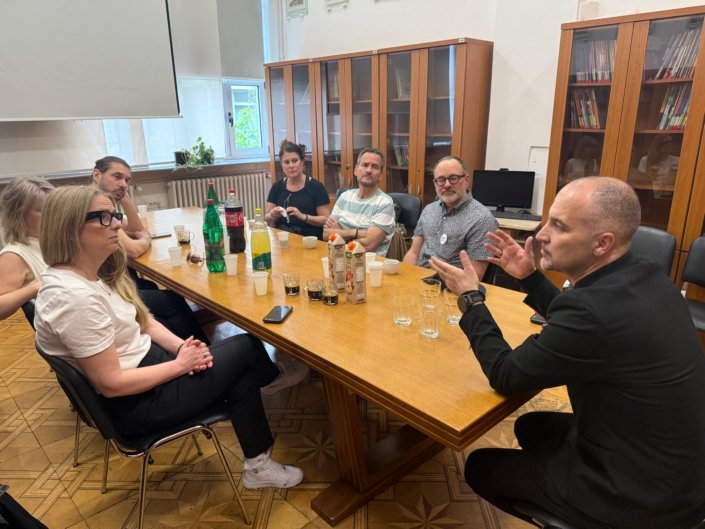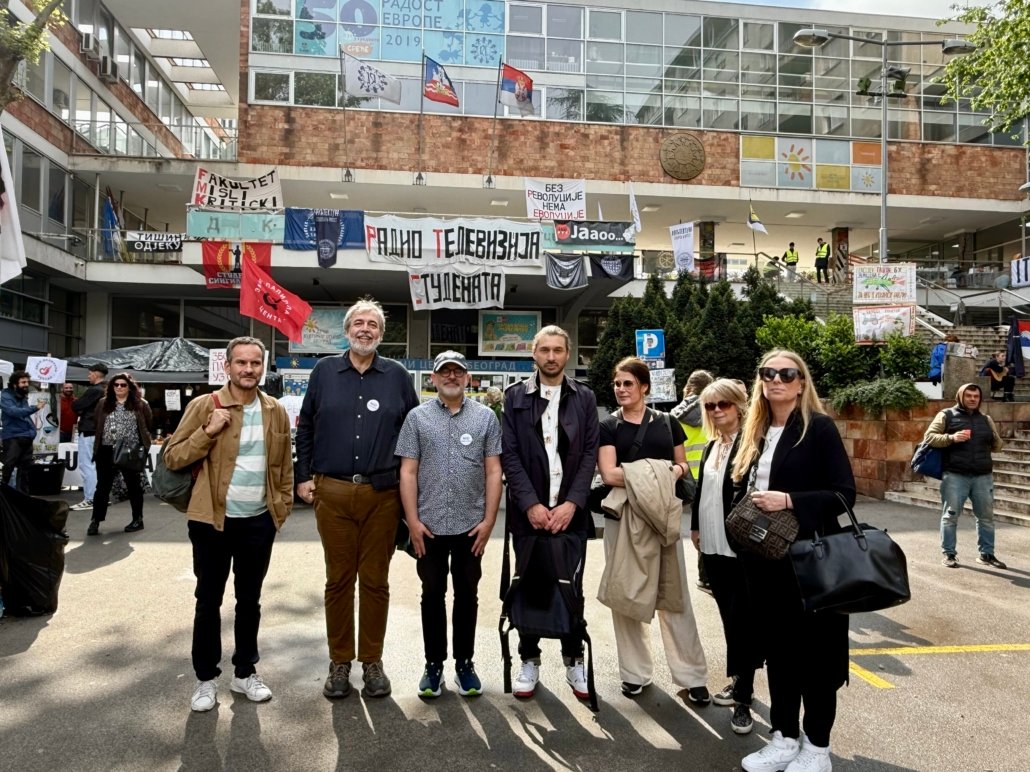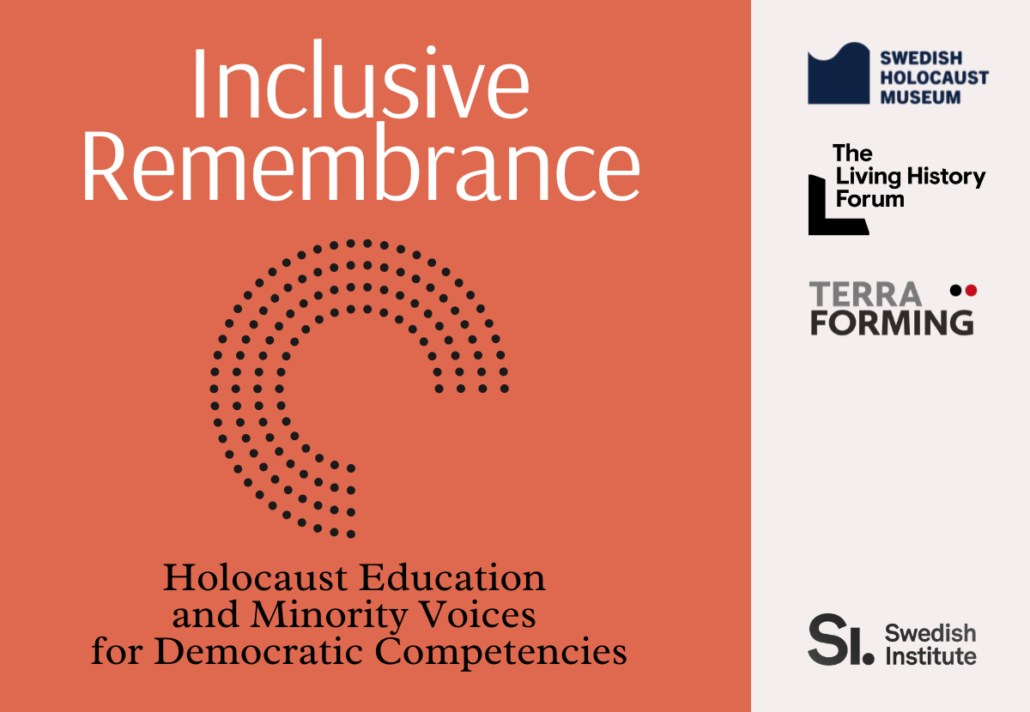Our guests from Sweden and the US, with Roma activists in Belgrade
Inclusive memory, remembrance of the persecution and genocide of the Roma, and Roma civil society organizations
As part of the international project supported by the Swedish Institute, titled “Inclusive Remembrance – Holocaust Education and Minority Voices for Democratic Competencies,” hosted by Terraforming, guests from the Swedish Holocaust Museum and the Living History Forum continued their study visit in Serbia. After a fulfilling program in Novi Sad, we proceeded to Belgrade, where during the next two days, our focus was on the memory of the persecution and genocide of the Roma.
We visited ERIAC Serbia and held a workshop with Roma civil society organizations, including the Roma Youth Organization of Serbia (ROMS) and the Point of View. Also, we had a meeting with the director of the Institute for the Improvement of Education ZUOV, a specialized institution under the Ministry of Education of the Republic of Serbia.
ERIAC Serbia and the exhibition about the hidden history of the Roma Genocide
The European Roma Institute for Arts and Culture ERIAC office in Serbia is situated in the heart of Belgrade at 51 Majke Jevrosime Street. This office and art space covers approximately 140 square meters on the ground floor, featuring a street-access entrance and an open area suitable for exhibitions and events.
At ERIAC Serbia, we were warmly welcomed by our colleague Nadja Greku, Program Manager. Nadja guided us through the powerful and thoughtfully curated exhibition “Combing Through Time: Disentangling the Hidden Histories of the Roma Genocide.” The exhibition brings attention to the often-overlooked narratives of the Roma genocide during World War II and celebrates the resilience of Roma communities in Serbia and the wider region.
Nadja offered a nuanced perspective on this neglected history, highlighting gaps in representation—for example, the presence of images of male Roma resistance fighters, contrasted with the near-total absence of visual records of significant female Roma figures.
The visit was both productive and inspiring. Our guests from the Swedish Holocaust Museum, the Living History Forum, and Yale University’s Fortunoff Video Archive engaged deeply with the content and shared a strong interest in how Roma history is being remembered and presented. Thank you, ERIAC Serbia!
The European Roma Institute for Arts and Culture (ERIAC) has its headquarters in Berlin. The organization works to strengthen Roma identity and challenge negative stereotypes through arts, culture, history, and media. Its mission is twofold: to boost the self-esteem of Roma communities and to reduce prejudice among the majority population.
Institute for the Improvement of Education ZUOV
At the Institute for the Improvement of Education ZUOV, we met the Director, Zlatko Grušanović. The Institute is a separate entity closely affiliated with the Ministry of Education of the Republic of Serbia.
The mission of the Institute for the Improvement of Education is to ensure that all tasks related to the preparation of documents, professional evaluation of textbook quality, and expert opinions under the jurisdiction of the Ministry of Education, the National Education Council, and the Council for Vocational and Adult Education are carried out professionally and are broadly accepted. Furthermore, the Institute aims to ensure that activities related to coordination and cooperation with preschools, primary and secondary schools, higher education institutions, institutes, the business sector, and employers create the necessary conditions for improving the quality of education in the Republic of Serbia.
We had a great conversation at the Institute with Director Grušanović. It was an open and engaging exchange. Our guests from the Swedish Holocaust Museum, the Living History Forum, and Yale University’s Fortunoff Video Archive asked many thoughtful questions and were eager to learn how the Holocaust and the genocide of the Roma are being taught in Serbia. It was an open and engaging exchange that shed light on key challenges and opportunities in Holocaust education. Everyone gained valuable insight into the educational challenges Serbia faces today.
Roma civil society organizations: the Roma Youth Organization of Serbia ROMS and the NGO Point of View
At the cozy space of Cultural Center Dorćol we met our colleagues from the civil society organizations dedicated to the issues related to promoting and improving Roma rights and self-esteem while countering prejudices and discrimination against the Roma communities.
The Point of View is a well-established organization dedicated to Roma emancipation through international exchange and the self-empowerment of young Roma. A key aspect of their work is raising awareness and strengthening remembrance of the persecution and genocide of the Roma. Our long-term partner, Gordana Nešović, a journalist with the Roma editorial team at Radio Belgrade, is one of the driving forces behind the work of the Point of View.
The Roma Youth Organization of Serbia (ROMS) is a grassroots initiative founded by young Roma with the aim of contributing to the creation of a society where we all work together to build bridges between the Roma and the majority community. Among its core activities, the organization promotes gender equality and the empowerment of young Roma women, conducts training programs for Roma youth, and facilitates a network of Roma university students. Among others, the organization’s young leader, Maja Simić, took part in the exchange program at the Cultural Center Dorćol.
This meeting was one of the program’s highlights. It was a powerful exchange between young Roma activists and our guests from Sweden and the United States. The atmosphere was filled with curiosity, energy, and a genuine desire to learn on both sides. The young activists are eager to learn more about the history of persecution of the Roma, and at the same time, deeply motivated to shape a more inclusive memory culture where Roma voices are central.
Between meetings, we managed to visit the student protests in Belgrade. After the collapse of the roof structure at the railway station in Novi Sad in November 2024, which claimed the lives of 16 people, students in Serbia launched a movement demanding that those responsible be brought to justice. This call for accountability has evolved into a broader fight for the rule of law and against corruption, becoming the largest political protest in Serbia in the past 30 years. Roma students are also actively participating in the protests.
Supported by the Swedish Institute
The program is linked to the international project “Inclusive Remembrance – Holocaust Education and Minority Voices for Democratic Competencies” under the auspices of the Swedish Institute, which Terraforming leads in cooperation with the Swedish Holocaust Museum and the Swedish state agency the Living History Forum.

